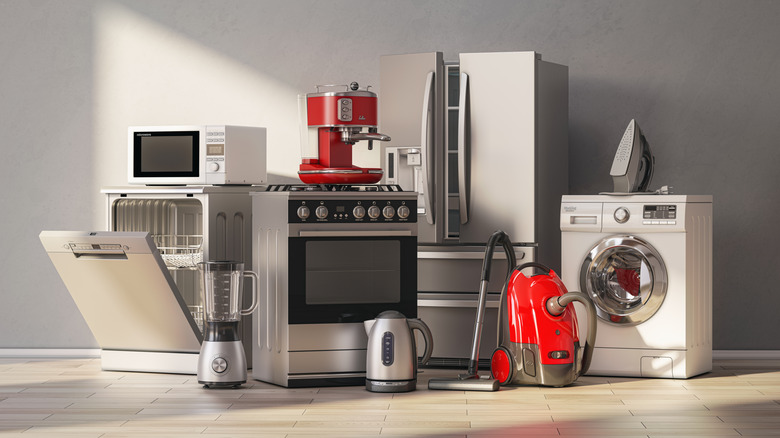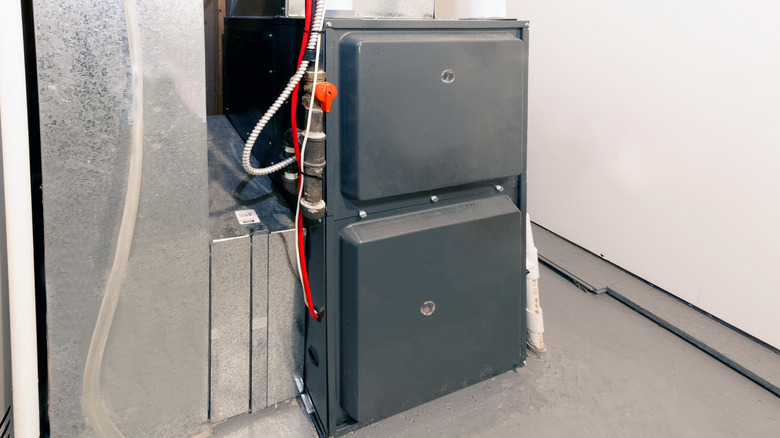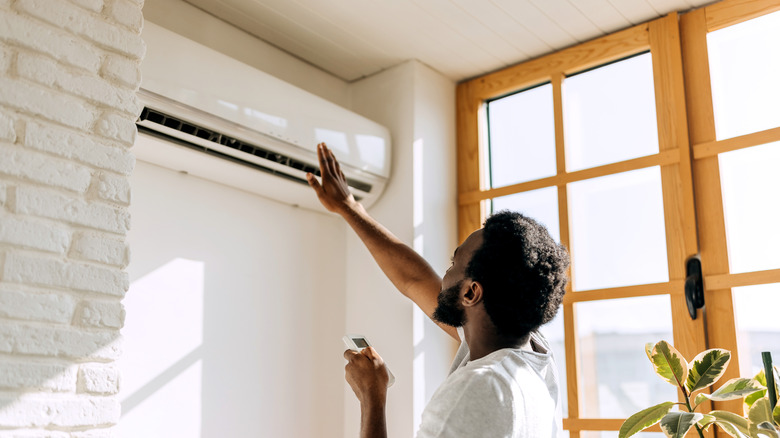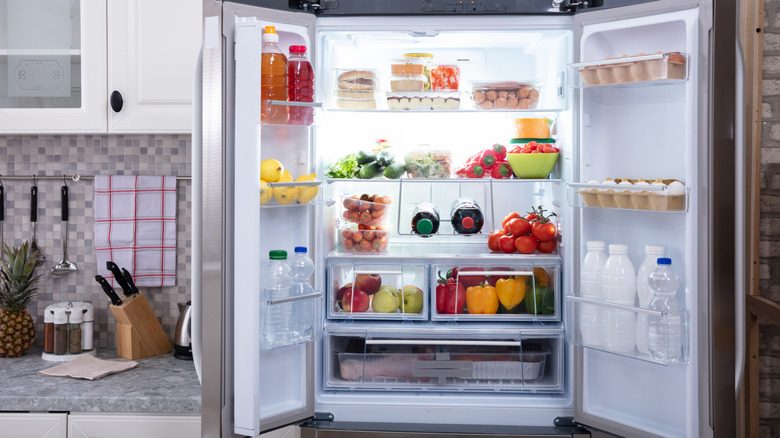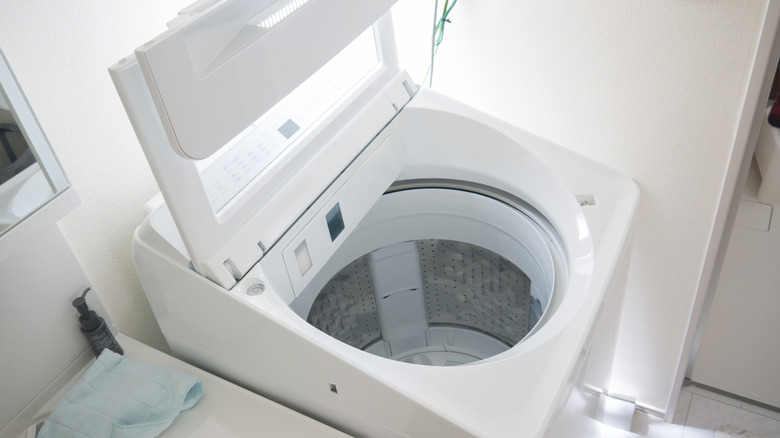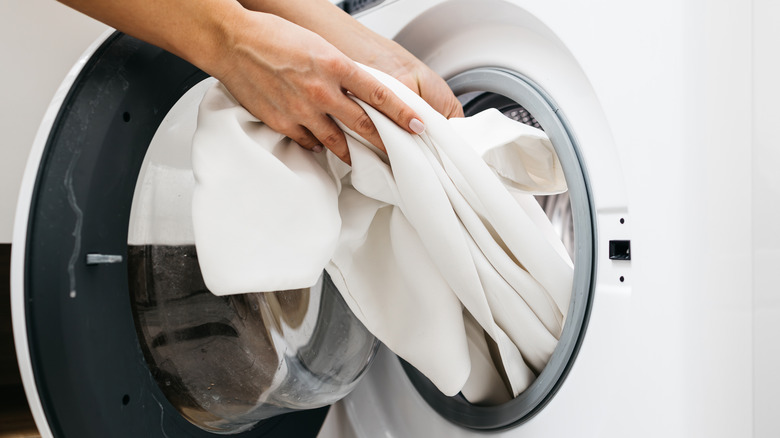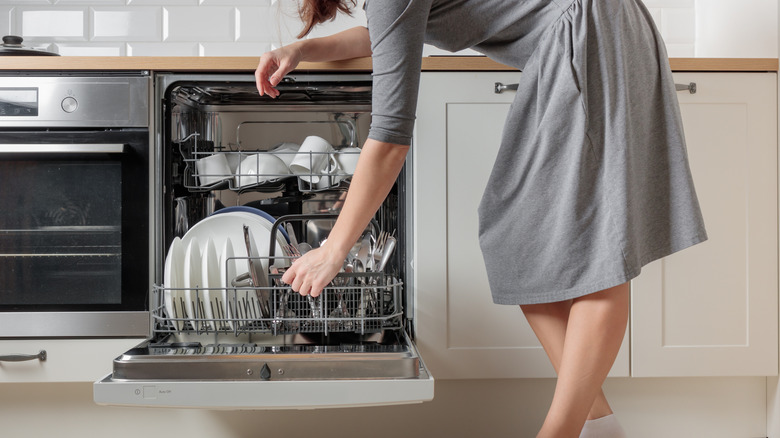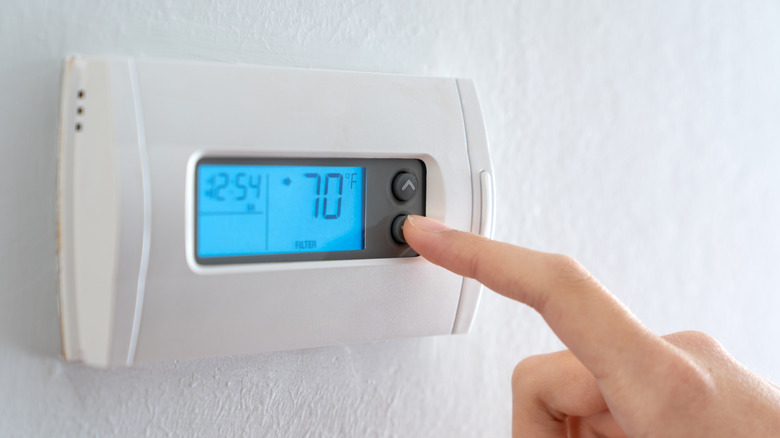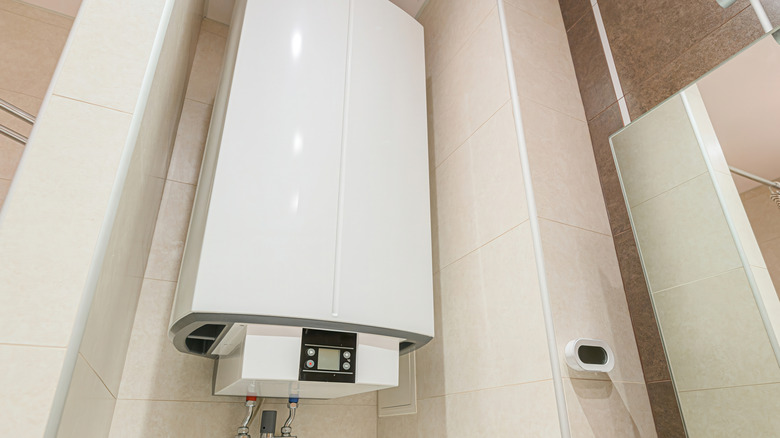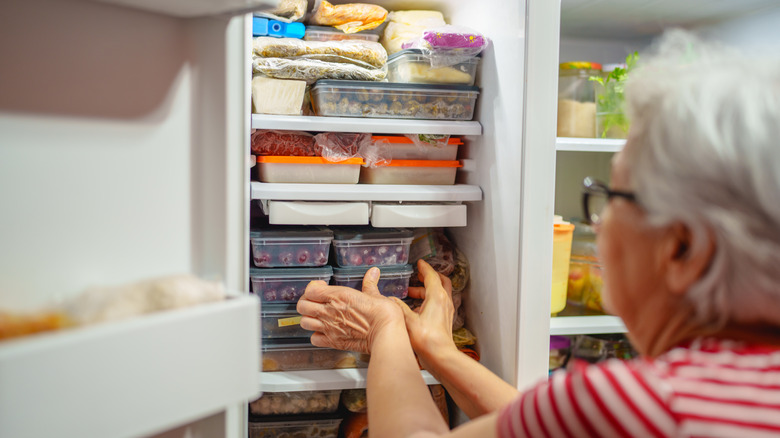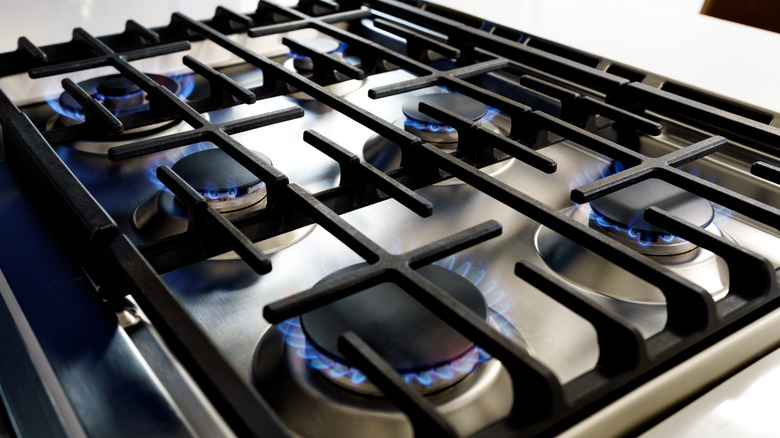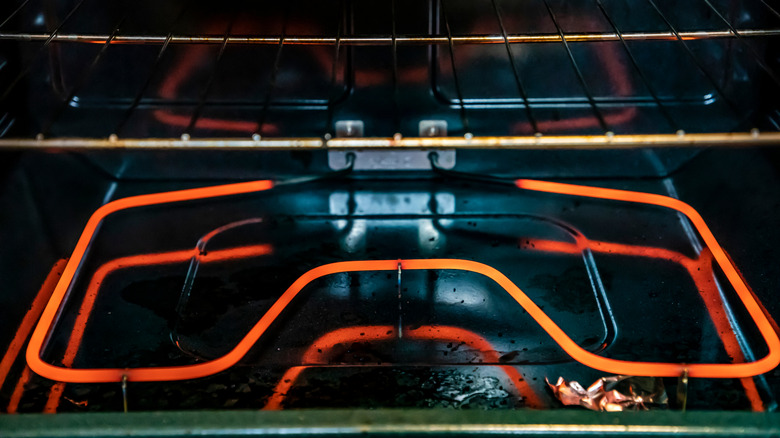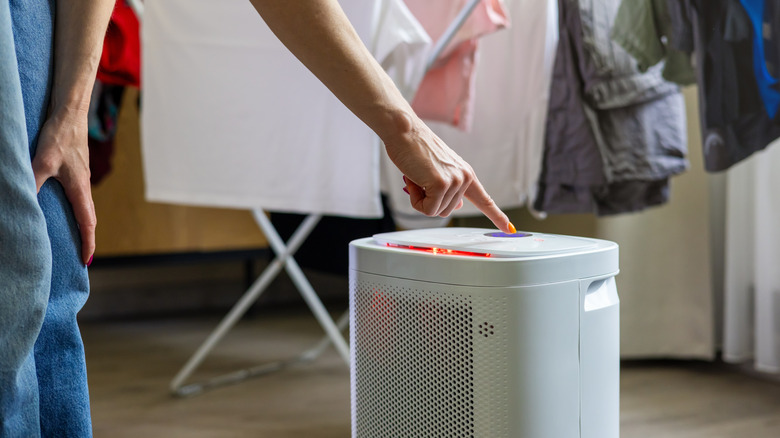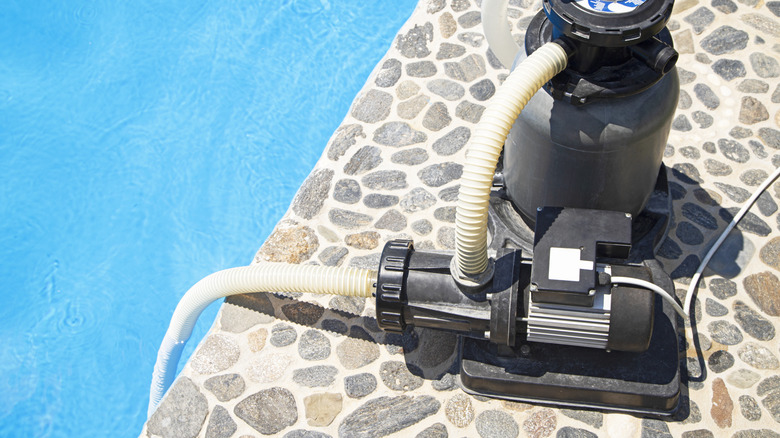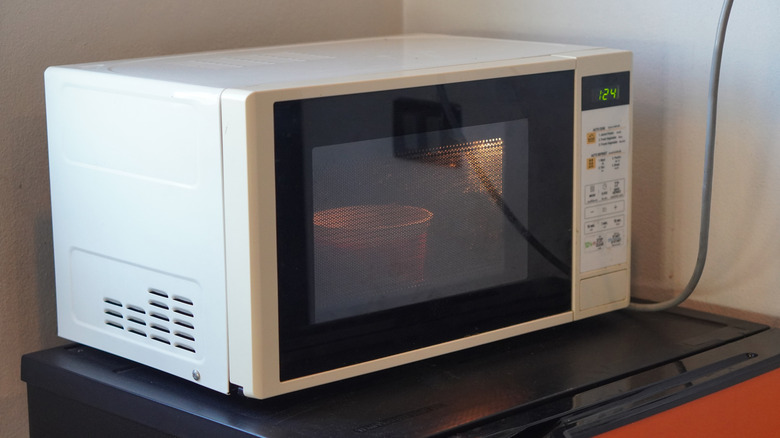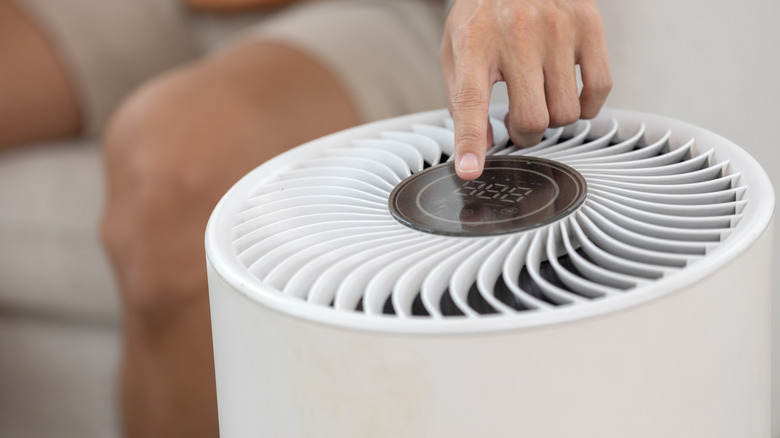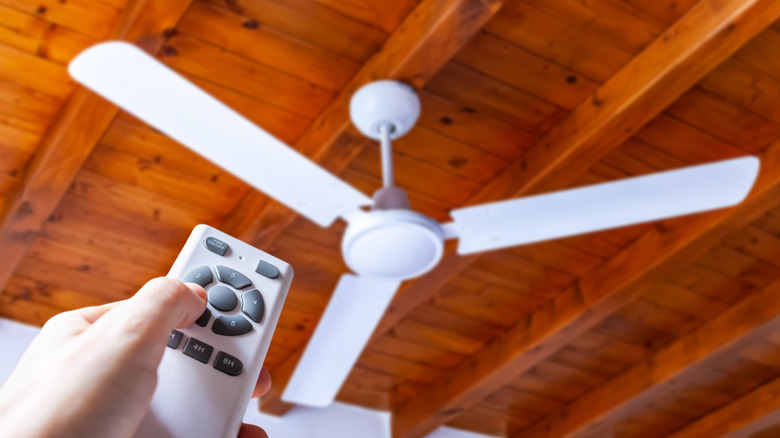16 Outdated Appliances You Should Upgrade For Better Energy Efficiency Immediately
Older home appliances are notorious for consuming significantly more electricity and water than modern counterparts. Decade-old refrigerators, washing machines, or HVAC systems often run on outdated motors or heating elements that lead to higher energy consumption. Beyond the financial cost, these energy hogs also contribute to environmental pollution and waste. Appliances that are 10 to 15 years old can use up to two times more energy than current Energy Star–certified models.
Upgrading to newer, energy-efficient versions is not only a long-term investment in comfort and performance, but can also qualify you for rebates or tax credits through government energy efficiency programs. When shopping for replacements, look for the Energy Star label, a certification backed by the Environmental Protection Agency (EPA), as it indicates compliance with strict efficiency standards. However, that's not all you should consider if you want to get energy- and water-efficient models. Each appliance has unique benchmarks for efficiency, and understanding them ensures that every upgrade truly saves power, money, and environmental impact.
Upgrading your old furnace can save fuel and cut waste
Your furnace that has been around since flip phones were a thing is likely guzzling fuel like there's no tomorrow. Older models often have an Annual Fuel Utilization Efficiency (AFUE) rating of 70% or less. That means for every dollar you spend on heating, about $0.30 literally goes up the chimney. Upgrading to a high-efficiency furnace with a 95% or higher AFUE rating can make a massive difference. We're talking potential savings of over $1,300 in total fuel costs and noticeably lower monthly bills. Plus, you'll be reducing your carbon footprint, while keeping your home cozy without guilt.
When shopping for a new furnace, don't just stop at the AFUE rating. Look for models with fully modulating gas valves or two-stage heating, as they adjust automatically to meet your home's heating needs, instead of blasting at full power all the time. A variable-speed blower is another smart feature that'll allow your furnace to run more quietly and efficiently
Replacing your air conditioning unit can slash cooling energy waste
That old air conditioner that has been faithfully chugging along is probably working harder and costing you more than it should. Older central AC units often come with a Seasonal Energy Efficiency Ratio of 10 or less, which is well below today's federal minimum of 14 to 15. In simple terms, that means your old unit is using way more electricity to deliver the same cooling. Upgrading to a new, energy-efficient model could slash your cooling energy use by 20% to 50% per year. That's great for your wallet. Newer systems also tend to cool more evenly, so you can finally say goodbye to that one room that never seems to get cold enough.
When you're ready to shop for a new unit, keep an eye out for features like variable-speed or inverter-driven compressors. These adjust cooling output based on your home's actual temperature needs, instead of cycling on and off constantly. Also, make sure your AC is properly sized for your space. A unit that's too small will overwork itself, while one that's too large will short-cycle, wasting energy and wearing out faster.
Upgrading your refrigerator yields the highest home energy savings
If your refrigerator has been with you since the early 2000s, it's quietly eating up a serious chunk of your electricity bill. Older models can consume up to 1,700 kilowatt-hours a year, while newer models use closer to 400 to 500 kilowatt-hours, and that's up to 40% less energy. Since the fridge is one of the few appliances that runs 24/7, those savings add up fast. Think of it as paying your fridge rent every month, and an older one is definitely overcharging you.
When shopping for a new model, efficiency isn't just about brand names or shiny finishes. Look for a top-freezer design; they are more energy efficient than side-by-side or bottom-freezer options. The yellow EnergyGuide label is your best friend here, as it gives you a quick comparison of annual energy use. Skip the built-in ice and water dispensers if you're serious about savings, because, while they may be convenient, they bump up energy consumption.
Low-efficiency washers lead to high water and energy use
If your washing machine is over a decade old, it's probably guzzling water and electricity. Older washers can use around 40 gallons of water per load, while newer high-efficiency models use as little as 10 to 25 gallons. They also use less energy than a traditional loader. Beyond the eco-friendly benefits, that's a noticeable drop in your utility bills over time, and your clothes will still come out just as fresh, if not fresher.
When shopping for a new washer, check the Integrated Modified Energy Factor; the higher, the better for efficiency. Front-load washers tend to outperform top-loaders, because they tumble clothes instead of just moving them around in water, making them more energy- and water-efficient. You should also look for a model with a high maximum spin speed, as this extracts more water during the cycle, cutting down drying time and saving even more energy.
Your old clothes dryer might be affecting overall laundry efficiency
Old-school vented dryers are basically hot air factories. They push warm, moist air outside, forcing your HVAC system to work harder to keep your home cool. Not only that, they can use up to 4 to 5 kilowatt-hours of energy per load, which adds up fast. Newer models, especially heat pump or condenser dryers, can use less energy than conventional ones. So, if your dryer has been humming along for close to two decades, it's likely costing you more than you realize in hidden energy waste.
When upgrading, prioritize ventless heat pump technology, which recycles hot air instead of constantly pulling in new air, drastically improving efficiency. Also, check for models with dryness sensors, which prevent over-drying and save even more power. Size matters, too. Pick one that fits your washer capacity to avoid half-empty or overloaded runs. Finally, look for a high Combined Energy Factor (CEF) rating. A higher CEF means the dryer uses less energy per pound of laundry.
Upgrading your dishwasher can cut water and power use per cycle
Dishwashers are great to own, but when your model is averaging the age of a 20-year-old, it's time to change it. Older models can use 10 to 15 gallons of water per load, while modern Energy Star-rated dishwashers use as little as under 4 gallons. That's a major difference. The energy savings from upgrading could add up to $30 to $60 per year, not to mention the gallons of water spared.
When shopping for an upgrade, look for soil-sensing technology, which automatically adjusts the wash cycle based on how dirty your dishes are — meaning, no more over-washing a half-full load. Multiple cycle options also help you match cleaning power to your needs. If your household is small, don't go oversized when you buy, as dishwashers that are too large for your daily use will waste water and power. A compact, high-efficiency model with an Energy Star certification is your ticket to clean dishes and cleaner bills.
Switching to a smart thermostat offers advanced control over your HVAC system
Still using a basic thermostat that just turns your system on and off? You might be missing out on easy savings, because, as you've probably already heard, smart thermostats are worth the hype. These devices can trim your heating and cooling costs on already existing systems or new ones. They become familiar with your habits and automatically adjust temperatures when you're asleep or away — no more wasting energy keeping an empty house comfortable. It's one of those upgrades that pays for itself before you even notice by saving you an average of 8% to 15% annually.
When shopping for one, prioritize models with auto-scheduling and occupancy sensing, so they can adapt in real-time based on your routine. Many also provide energy reports showing exactly how much you're saving. If your home system uses a heat pump, however, double-check compatibility, as not all smart thermostats are designed for those. Ensure that if your unit relies on Wi-Fi, keep it within range of your router to avoid connection hiccups.
Traditional storage water heaters suffer from standby energy losses
Traditional storage water heaters constantly keep a large tank of water hot, even when no one's using it, which means wasted energy and higher bills. Tankless, demand-type water heaters skip that step by heating water only when needed, cutting down on standby losses entirely. Depending on how much hot water your household uses, these models can be 8% to 34% more efficient than standard storage heaters. Another great alternative is a heat pump hybrid water heater, which uses surrounding air to heat water instead of relying solely on electricity, saving even more energy in the long run.
When shopping for a new unit, check the Uniform Energy Factor; a higher number means better efficiency. Tankless models with a UEF above 0.90 are top performers. For heat pump versions, make sure your space has adequate ventilation for the best results. You'll save energy, cut your bills, and still have all the hot water you need without the waste.
Upgrade your freezer to a chest version to store bulk frozen food
The trouble of deciding which is right for your home between a chest freezer and an upright freezer can be sorted out when you view your energy bills. Older upright models are less efficient, because every time you open the door, all the cold air spills out. Chest freezers, on the other hand, trap the cold air inside, due to their horizontal design. A modern chest freezer typically uses about 215 kilowatt-hours of electricity annually, while a comparable upright freezer consumes around 395 kilowatt-hours, nearly double the amount. Plus, chest freezers are better at maintaining steady temperatures and can keep food frozen for longer during power outages, thanks to their extra insulation.
Opt for a manual defrost model, as they save more energy than automatic defrost versions. Look for an Energy Star-certified freezer with high-quality, thick insulation and airtight door seals that prevent heat exchange. Consider a model with an interior LED light and adjustable temperature controls for easy use and to reduce the time you spend with the freezer open while searching for something.
Gas and electric cooktops are not very energy-efficient
If you use gas burners or old electric cooktops, expect wasted energy. The primary form of inefficiency here is caused by a significant amount of energy lost as wasted heat, compared to induction cookers. Induction cookers have an energy efficiency percentage of 84% when cooking, whereas conventional coil or gas cooktops have their efficiency falling within 74% and 40%, respectively. Clearly, induction stovetops use less energy overall and produce less unused heat in the kitchen.
When buying, prioritize induction models with auto-pan detection, so elements power up only when cookware is present, and choose units with variable power levels for simmering and searing. Check whether zones can be bridged for large cookware. Ensure your home's electrical panel can handle the cooktop, as many induction ranges need a dedicated circuit. Also consider cookers that provide you with clear warranties and user reviews reporting real-world savings. Don't forget cookware compatibility.
Conventional ovens might be increasing your cooking time
Traditional ovens rely on stationary heating elements that cook food unevenly and often require longer preheat times. If you're a lover of efficiency, you don't need to see signs that your oven is too old before you make the switch to convection ovens. They typically use a fan to circulate hot air, which can reduce cooking time by up to 25% and allow lower cooking temperatures. Thus, upgrading to a convection oven can significantly cut overall energy usage, making it a cost-efficient and environmentally friendly choice.
When shopping for a new oven, look for models with robust insulation to minimize heat loss and enhance efficiency. Also, consider a model with programmable settings, multiple cooking modes, and temperature control settings for even cooking. Of course, Energy Star-certified ovens are a reliable indicator of efficiency, and features like delayed start timers allow you to run the oven during off-peak energy hours. Pair your oven upgrade with energy-efficient cookware to maximize the savings and overall cooking performance.
Replacing a dehumidifier can lower continuous power use
Once in a while, you might get the clear sign that it's time to dehumidify your home, but before you run that old dehumidifier, know that it can be surprisingly thirsty when it comes to energy. High-efficiency, Energy Star-certified dehumidifiers are designed to extract more moisture, often using 15% less energy than older, non-certified models. The combination of smarter humidity control and higher energy efficiency makes upgrading a no-brainer for homeowners who want to maintain their HVAC systems better.
When shopping for a new dehumidifier, check the Integrated Energy Factor (IEF), which measures water removal per unit of energy consumed. A higher IEF means a more efficient machine. Look for models with a reliable built-in humidistat, allowing you to set your ideal relative humidity, usually between 30% and 50%. Capacity matters too. When replacing, consider how much water you empty away each day, and note that it's always better to get a bigger size dehumidifier than one that's too small for your space.
Upgrading from a single-speed to a variable-speed pool pump saves up to 90% in energy
Pool pumps are surprisingly sneaky when it comes to energy use and utility bills. While it is the best method for draining your above-ground pool, traditional single-speed pumps run at full power regardless of actual filtration needs, wasting energy. Switching to a variable-speed pump allows you to dial down the flow when full power isn't necessary, saving between 70% and 90% of annual energy consumption. Variable-speed pumps are also quieter and easier to maintain, which means a cleaner, healthier pool with less dent on your utility bills.
When upgrading, choose the smallest pump that still meets your pool's filtration and spa needs, as oversized pumps waste energy. Pair the pump with a programmable pool timer, so you can run high-speed filtration only when necessary — usually a few hours per day — and use low speeds for daily circulation. Consider models with smart controls or Wi-Fi connectivity for easy scheduling.
Upgrading your microwave can improve energy efficiency
It might surprise you, but newer microwaves don't always draw fewer watts than older ones; some actually use more because they're more powerful. The key, however, is efficiency, as newer microwaves cook food faster and more evenly, which means they spend less time running overall. Older units lose heating strength over time, forcing you to use higher power settings for longer periods, which boosts energy consumption. So, while the wattage might be higher on paper, actual electricity use can be lower when you're cooking smarter and faster with a modern unit.
When shopping for a new microwave, look for features that help minimize energy waste. An auto-shutoff feature turns off the display and standby power when not in use, which can save around 35 kilowatt-hours annually. Inverter technology is another efficiency booster, offering precise power control that's especially handy for defrosting or simmering without wasting time. Pair these features with smart usage habits, like avoiding usage when empty, to make your microwave a genuinely energy-saving kitchen tool.
Your outdated air cleaners could be consuming as much energy as a fridge
Many standard air purifiers are stealthy energy consumers; some models consume as much electricity over a year as a typical refrigerator. High-efficiency air purifiers capture a much greater percentage of harmful air particles, ensuring clean and breathable air and better air flow. Modern Energy Star-certified purifiers are also about 65% more efficient than average purifiers, and that's a huge difference in saved energy.
When shopping for a new air cleaner, match the Clean Air Delivery Rate to the size of your room. This ensures the purifier operates efficiently, providing fast cleaning without overworking itself. Look for features like air quality monitors and speed adjustment, so the device only runs at the level needed. Get models with filter replacement indicators that alert you when filters are clogged and need to be replaced in order to maintain efficiency over time. An air purifier works better in certain locations than others, so it's best to know the best spot in your home to put an air purifier and keep it there for best use.
Ceiling fans are already energy savers, but a modern one saves even more
Ceiling fans are already low-energy heroes, creating a wind-chill effect that lets you raise your thermostat by up to 4 degrees Fahrenheit, which can cut cooling costs by around 12%. But older models with standard AC motors aren't as efficient as modern fans equipped with direct current (DC) motors. It's important to know the top-rated energy-efficient ceiling fans for your home. These newer motors can use up to 70% less energy, while delivering the same, or even better, airflow. Beyond energy savings, modern fans often run quieter, making them a smart upgrade for both comfort and efficiency.
When picking a new fan for increased efficiency, focus on designs that optimize airflow. Curved blades with an ideal pitch of 12 to 15 degrees help move air more effectively, reducing the amount of energy required to cool your room. Make sure to select a fan size appropriate for your space. Combining motor technology with proper blade design and size ensures your fan delivers maximum comfort without unnecessary energy waste.
